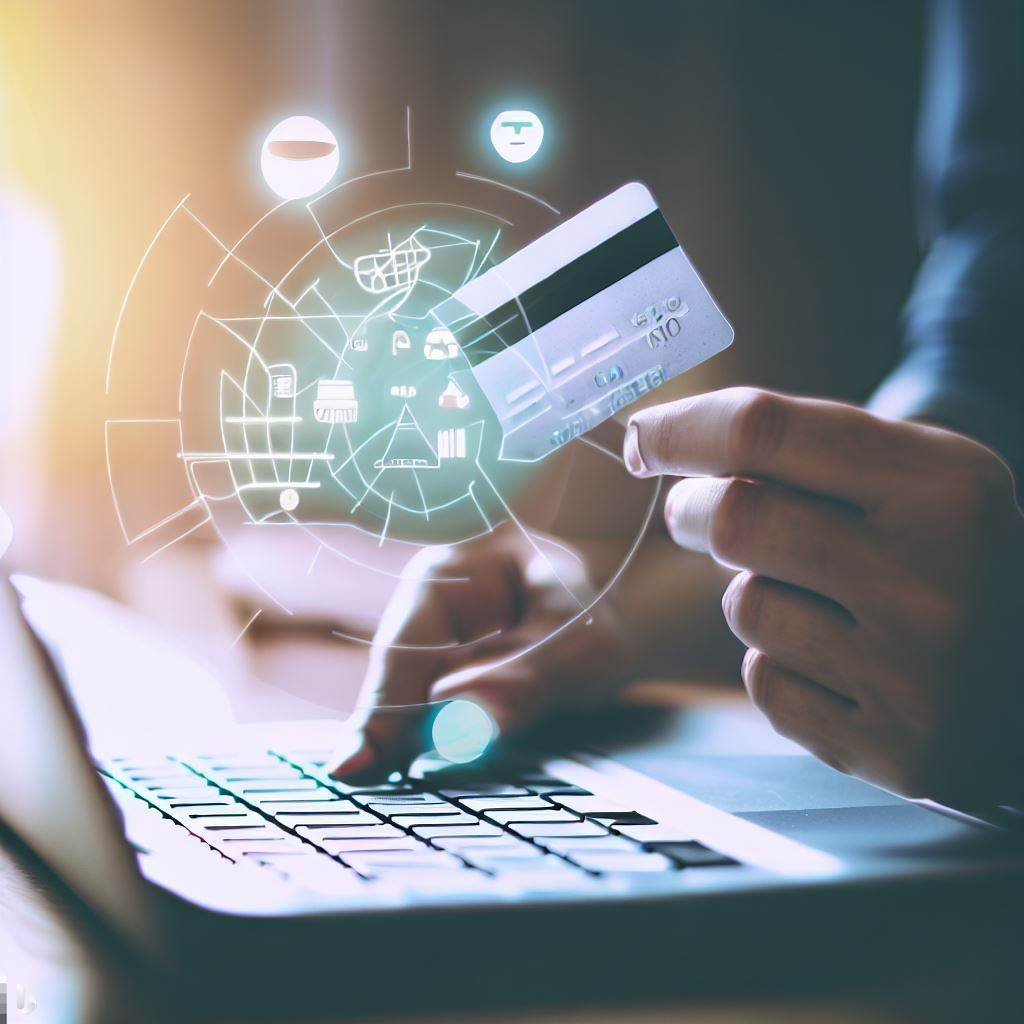The future of online payments for SMEs
In a rapidly changing digital world, it can be challenging for SMEs to keep track of the latest trends in the online payment landscape. But the importance of adaptability and anticipating customer needs cannot be overstated.
Have you ever wondered what the world of online payments will look like in the next few years? Which innovations will be most relevant for SMEs?
Evolution of online payments for SMEs
The last few years have brought a drastic change in the world of online payments for SMBs. Just a decade ago, online payment options were limited for many small businesses. Often, these solutions were expensive and complicated to implement. But thanks to technological advances and a changing business environment, this is different today.
In the recent past, mobile payments and digital wallets such as Apple Pay, Google Wallet and PayPal have dominated the field. They offered SMEs the opportunity to process payments more efficiently and quickly while increasing security. Cloud-based solutions enabled companies to digitize their business without large upfront investments.
The future in online retail - what does it look like?
Thanks to the increasing adoption of Open Banking and API-integrated payment solutions, SMEs can now offer tailored payment experiences. They no longer rely on traditional banks or expensive payment service providers. In addition, cryptocurrencies and blockchain, despite their volatility, have sparked a new debate about the future of money and payments.
The pandemic has further accelerated this change, as SMEs have been forced to rethink their business models and seek more online sales opportunities. This has further underlined the importance of efficient, secure and flexible online payment systems.
Overall, recent developments in online payments have not only provided SMEs with more options and flexibility, but also raised consumer expectations for seamless, secure and fast payment experiences.
Buy Now, Pay Later (BNPL) Options
The trend of "Buy Now, Pay Later" (BNPL) has undoubtedly changed the way consumers:inside pay for their online purchases. Instead of paying the total amount immediately, customers now have the option to split the amount, for example, TWINT recently launched "Pay TWINT Later." This new way of shopping also has an impact on small and medium-sized enterprises (SMEs), which often see an increase in average order values.
A key benefit of the BNPL trend for SMEs is that customers:inside are more inclined to buy more if they know they do not have to pay the full amount immediately. By allowing them to split the total amount, the purchasing process becomes more flexible and less restrictive. They feel encouraged to add higher value products or additional items because they have the option to defer payment.
In addition, the BNPL trend also increases customers' confidence in the purchasing process. By having the option to split the amount, customers feel financially relieved and more secure in carrying out the purchase. This increased purchasing security leads to higher order values and thus to an increase in sales for SMEs.
Another benefit of the BNPL trend is that it strengthens SMEs' customer loyalty strategies. By offering customers the option to split the amount, SMEs can establish a long-term relationship and build a loyal customer base. Customers who have had a positive experience with BNPL are more likely to buy again and take advantage of this flexible payment method.
TWINT "Pay later"
TWINT, a well-known mobile payment provider in Switzerland, has recognized the trend of "Buy Now, Pay Later" (BNPL) and introduced its own option called"Pay TWINT later". With this feature, customers can make purchases immediately but have the option to pay for them at a later date. This not only gives consumers more financial freedom and flexibility, but also increases their willingness to make purchases, as they do not have to pay the full amount immediately. "TWINT pay later" reflects the global shift in consumer preferences and shows how traditional payment methods are adapting to modern needs.
Example: Companies like Klarna and Afterpay dominate the BNPL market. The ability to buy now and pay later has increased customer loyalty and trust. A shoe store in Stuttgart reported that after the introduction of BNPL, customers:inside not only bought more frequently, but also added more expensive items to their shopping carts.
Buy now - Pay Later
Contactless payments
In a world where speed and efficiency are invaluable, contactless payments have become an indispensable component. They allow us to significantly reduce waiting time at the checkout while providing an additional layer of security for both customers:and vendors. The ability to make payments without physical contact with the card has made everyday life much easier. Long lines at the checkout are now a thing of the past.
Instead of searching through wallets and purses or laboriously inserting cards, customers can simply use their contactless cards or smartphone to pay in a flash. This not only saves time, but also reduces the stress and frustration often associated with paying.
In addition, contactless payments provide an extra layer of security, as neither customers nor vendors need to touch the physical card. This reduces the risk of fraudulent activity and enables a worry-free shopping experience. Using the latest technologies such as NFC (Near Field Communication), payments can be made securely and conveniently with a simple touch.
However, the benefits of contactless payments go beyond speed and security. For merchants, implementing this payment method means a competitive advantage and improved customer service.
Example: After the global pandemic, a restaurant in Berlin started offering contactless payments, which significantly reduced the number of cash transactions. Customers praised the fast and hygienic payment process.
QR code payments
QR codes have become increasingly popular in recent years due to their ease of use and versatility. Unlike traditional barcodes, they don't require expensive machines or special equipment. All that is needed to read and generate QR codes is a smartphone with a camera function. These features make QR codes an extremely cost-effective option for small and medium-sized enterprises (SMEs).
Previously, companies were forced to purchase expensive barcode scanners or special hardware to barcode their products or capture customer information. With QR codes, however, this is a thing of the past.
Thanks to their ease of use, SMEs can now use QR codes to reap the benefits of this technology in a variety of ways. For example, you can place QR codes on your products to provide information such as product descriptions, instructions or promotions.
In addition, QR codes can also be used for customer loyalty programs. Companies can create QR codes that invite customers to register or participate in bonus programs, sweepstakes or discount promotions. This allows SMEs to drive customer interactions, collect data, and expand their customer base without incurring high costs.
Example: A health food store in Cologne introduced QR code payments for customers who wanted to pre-order their products online and pick them up in the store. They could scan the QR code, pay and take their products without waiting.
Open Banking
Open Banking provides a comprehensive platform for financial services companies and third-party providers to effectively share and leverage banking information.
This innovative technology has the potential to fundamentally change the way financial products and services are offered. By disclosing banking information, customers:inside will be provided with a wide range of financial products and services that better meet their individual needs.
With Open Banking, customers can share their banking data securely and seamlessly with third-party providers, for example to use personalized financial advice, budgeting tools or comparison platforms.
This means that customers:inside have a more comprehensive overview of their financial situation and can make informed decisions. In addition, Open Banking enables financial services companies and third-party providers to develop innovative solutions by accessing the extensive database.
By accessing banking information, companies can improve their existing products and develop new, tailored offerings.
For example, lenders can make better credit decisions thanks to the comprehensive insight into the customer:s financial situation and offer financing solutions that are specifically tailored to the needs and possibilities of the clientele.
Example: A FinTech start-up in Hamburg used Open Banking to offer SMEs tailored financial products based on their transaction history and financial behavior.
Ecosystems for digital wallets
Digital wallets have evolved in recent years to offer much more than simple storage of card information. They have evolved into a complete ecosystem offering a wide range of services for shopping, payment processing and other financial transactions.
By integrating with various e-commerce platforms and payment providers, digital wallets enable users to have a seamless and convenient shopping experience.
Example: A start-up from Munich developed an app that allows customers:inside not only to pay, but also to track their expenses, share bills and even make small investments. This led to an increase in user loyalty and increased recurring revenue.
Artificial intelligence in payment processes
The financial industry is undergoing a revolution driven by artificial intelligence (AI). Particularly in the area of online payments, the use of AI is opening up significant opportunities to improve the efficiency and security of transactions.
Thanks to advanced algorithms, payment processes can be analyzed in real time to detect and prevent fraudulent activity. The AI-based systems can detect suspicious patterns and unusual activity even before customers or merchants themselves become aware of it. This proactivity enables financial institutions to ward off fraud and ensure the security of transactions.
Another benefit of AI-powered solutions in the financial industry is the ability to improve customer service. AI-based chatbots can interact with customers in real time and provide them with instant answers to frequently asked questions. This allows companies to optimize their customer service and handle customer inquiries more effectively.
In addition, AI-powered chatbots are able to recognize complex queries and forward them to human employees. In this way, customers can receive individualized and personalized support, even if their question goes beyond the scope of an automated solution.
The future of the financial industry will undoubtedly be shaped by AI.
Example: An online store in Leipzig integrated AI into its payment process and was able to reduce the fraud rate by 40%, while customer service became more efficient and customer-friendly.
Banking as a Service (BaaS)
The world of financial services has undergone a revolution with the advent of Banking-as-a-Service (BaaS). This innovative approach enables companies to create their own customized financial products without having to develop their own banking infrastructures from scratch.
The introduction of BaaS makes faster time-to-market possible, as companies can now rely on third-party platforms instead of having to build complex internal infrastructures. This significantly shortens development time and enables companies to respond quickly to changing market conditions.
Thanks to third-party platforms, companies can also reduce costs. Developing and maintaining your own banking infrastructure requires significant investment, both financial and in terms of time. By using BaaS, companies can minimize these expenses and direct resources to other business-critical areas.
Another advantage of BaaS is that companies are able to meet specific customer needs much better. The flexibility and adaptability of BaaS platforms enables companies to develop innovative financial products tailored precisely to their customers' needs.
Example: A FinTech company from Frankfurt used BaaS to develop a mobile banking app specifically for freelancers within a few months, integrating functions such as invoicing, payment tracking and tax preparation.
Cryptocurrencies and Blockchain
Bitcoin and other cryptocurrencies have undoubtedly undergone a remarkable evolution. What was once considered a fringe phenomenon is now firmly part of the mainstream. More and more people are discovering the benefits of cryptocurrencies and recognizing their potential as an alternative to traditional payment methods.
One of the biggest advantages of cryptocurrencies is their decentralized nature.
Unlike traditional currencies, which are controlled by a central bank or government, cryptocurrencies are backed by a network of computers. This means that no single entity has sole control over the system, which in turn increases user trust. Transactions are recorded on a public ledger technology, the blockchain, which provides unprecedented transparency.
Another advantage of cryptocurrencies are the often lower fees compared to traditional payment methods. Since no intermediaries or banks are involved, transactions can be processed cheaply and quickly. This makes cryptocurrencies attractive for companies and individuals who want to make cross-border payments.
It is clear that cryptocurrencies and the underlying blockchain technology represent a revolutionary change in the financial sector. More and more companies and even governments are recognizing the potential and working to integrate this technology into their daily payment processing.
Example: A boutique hotel in Hamburg started accepting Bitcoin as a payment method. This not only attracted a new clientele of crypto enthusiasts, but also allowed the hotel to process international payments without the usual bank fees.
Digital progress never stops, and the pace of innovation in online payments is very fast. It's critical for SMEs to stay up to date and take advantage of these developments. From AI to BaaS to cryptocurrencies, the opportunities to optimize and diversify payments are numerous and offer opportunities for growth and expansion in the digital economy. It's not just about keeping up with the competition, but also about meeting and exceeding the expectations of customers:inside.
The above trends are just a few of the many developments expected in the coming years. By understanding and implementing these trends, SMEs can ensure that they remain competitive.




